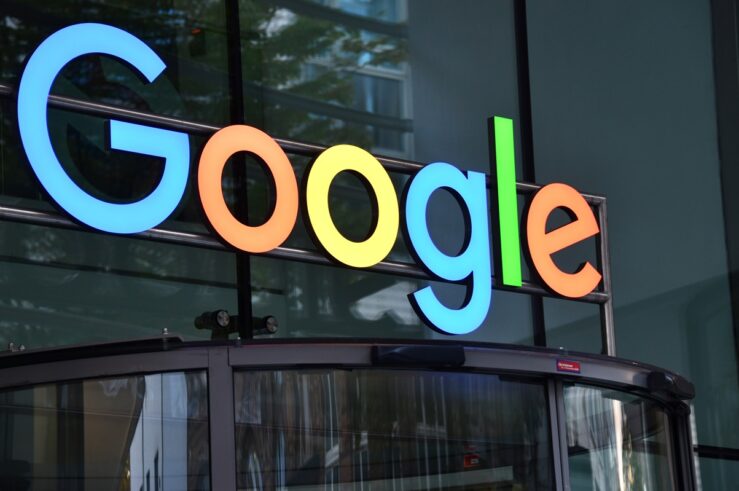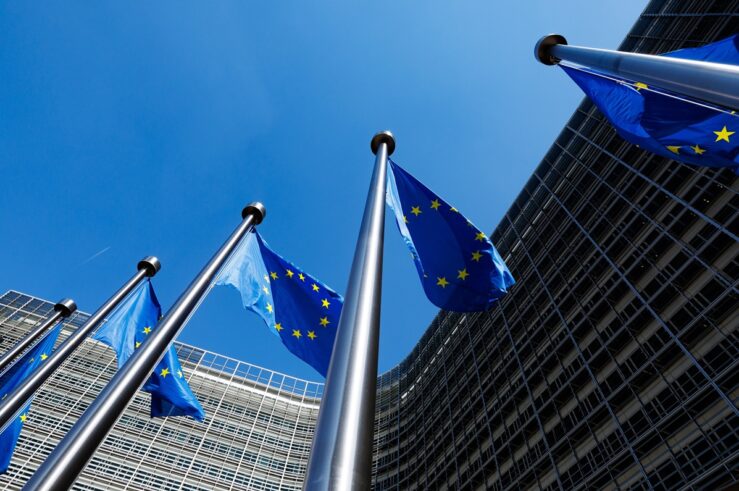
The European Commission appears resolved to tear down Apple’s “walled garden.”[1] Following a complaint filed by Spotify, the Commission has already fined Apple an exorbitant €1.8 billion for allegedly abusing its dominant position in the market for distributing streaming-music apps to iPhone and iPad users (a case where Apple was found to be dominant in a narrowly defined product market encompassing only its own products).[2]
More recently, on June 24, the Commission informed Apple of its “preliminary view” that its App Store rules violate the Digital Markets Act (DMA), since they prevent app developers from “freely steering consumers to alternative channels for offers and content.” Additionally, the Commission opened a noncompliance procedure against the company, because its new terms and conditions for third-party app developers (including its new “Core Technology Fee”) may not be compliant with the DMA.
Feels like déjà vu, right? It isn’t. This case is a follow-up to the “Spotify case” described above.[3][3] Here, however, the Commission goes further than in the Spotify case, with what amounts to an attempt to regulate Apple’s prices indirectly. According to the same press release:
Whilst Apple can receive a fee for facilitating via the AppStore the initial acquisition of a new customer by developers, the fees charged by Apple go beyond what is strictly necessary for such remuneration. For example, Apple charges developers a fee for every purchase of digital goods or services a user makes within seven days after a link-out from the app (emphasis in the original).
What does it mean that the fees “go beyond what is strictly necessary for such remuneration”? “Strictly necessary” as an antecedent to what consequent? Does the Commission even have the authority to regulate prices, directly or indirectly?
Not directly, at least. “Fairer prices” are supposed to be (in theory) a consequence of the DMA’s more “transparent and fair” framework. But let’s say that it does, for the sake of the argument. It does not follow that it should. Would it be good policy to regulate the fees charged by Apple? Even more broadly, would it be good policy to promote more “openness” in Apple’s “walled garden”?
It is important to take one or two steps back to answer these questions, and remember why Apple has chosen a (relatively) closed business model and how the company makes money. It is also important to consider how developers make money within Apple’s platform ecosystem.
Apple launched the iPhone in 2007, taking advantage of both a technological convergence and possibly consumer dissatisfaction with existing mobile phones (often clunky and with limited functionality). It is worth remembering that the first iPhone—the one that Steve Jobs announced—was, indeed, a fully closed model: there was no application store and no way to add new applications (or “programs” as we called them). It was an iPod with internet connectivity and the ability to make phone calls (of course, a better mobile-internet browser was a great improvement, and that, by itself, opened a wide array of possibilities for consumers and developers).
As Randy Picker reminds us, however, Apple retreated from this plan. It allowed Web 2.0 applications “which look and behave just like the applications built into the iPhone” in June 2007, and then launched the App Store in 2008. With the App Store, the iPhone became what some would call a “platform,” in the sense that it connected consumers with business users (the developers of applications). To consumers, Apple sells devices (which also include software and corresponding updates). To developers, Apple sells access to customers.
This is how two-sided platforms work: Apple has to be attractive to consumers not only by selling a well-designed, secure, and privacy-minded product, but also by having an attractive mix of applications run on top of its operating system. Here, quantity and variety are desirable (it means consumers can make more things, access more services, etc). But the applications have to be good, too. They have to be secure, not overly intrusive, and have good privacy. That is, there is consumer demand for certain nonprice aspects of the apps in the App Store, both individually and in aggregate. As Ben Thompson explains:
Apple didn’t just create the iPhone, they also created the App Store, which, after the malware and virus muddled mess of the 2000s, rebuilt user confidence and willingness to download 3rd-party apps. This was a massive boon to developers, and shouldn’t be forgotten; more broadly, the App Store specifically and Apple’s iOS security model generally really do address real threats that can not only hurt users but, by extension, chill the market for 3rd-party developers.
This was recognized by the U.S. District Court for the Northern District of California in its ruling in the Epic v. Apple case (which was similar to the Spotify case in the EU); where the judge was persuaded by Apple’s security arguments:
On the other hand, Apple has produced evidence that its security features are more effective than its competitors, a basis on which it competes.
This is important, because some authorities disregard Apple’s privacy and security explanations as mere excuses.
In this scheme, Apple makes money not only by selling devices to consumers, but also by collecting fees from developers. As Lazar Radic has explained:
Apple collects a fee to use its proprietary software and iOS (as well as access to a customer base with which it has built considerable goodwill over the years) through a commission on its in-app payment system (IAP). Apple also charges a commission on paid apps. But most app downloads (86%) are free, meaning that Apple charges nothing. This arrangement can be sustained because Apple cross-subsidizes those free downloads by charging a commission on in-app purchases and paid downloads.
Of course, this system does not work if developers can freely bypass Apple’s payment system. That’s why Apple has “anti-steering” rules that restrict how apps like Spotify can publicize alternative payment systems. But, it should be noted, apps and customers can bypass this. Again, as Radic has explained:
Spotify has effectively circumvented paying this fee because users don’t pay to download the app and because there are no in-app purchases. Users instead subscribe to Spotify through their web browser. Indeed, the fact that app developers have this power to either bypass the fee or to negotiate better terms may be considered evidence that the DMA’s “gatekeeper” designation is not as powerful as the Commission argues that it is. If an app offers a sufficiently cool service or product, users will follow that app to wherever they need to go and help the company to “win” the negotiation.
Despite this, the Commission has, as noted above, found that Apple’s anti-steering rules are “anticompetitive.” On top of that, the DMA mandate to “not prevent business users from offering the same products or services to end users through third-party online intermediation services or through their own direct online sales channel” (article 5.3) has forced Apple to offer additional options for payment-service providers within apps and additional options for processing payments. This, of course, will affect Apple’s ability to monetize its assets.
Some critics complain that Apple “treats iPhones as its territory.” As I have argued elsewhere:
…they are Apple’s territory. Of course, consumers own their smartphones, but when we buy an iPhone we are also signing up to a platform (or platforms) that has rules, security concerns, and maintenance costs. The operating system (iOS), the application store (AppStore), and the native applications that come with an iPhone all have costs that are not necessarily included in the price. Commissions help to cover those costs. Some people, like Spotify’s CEO, consider the fees set by Apple “too high” (“unaffordable”) but unless you want to impose some kind of price regulation (and we already know how those can end), it’s better to leave that to the market.
Well, now the Commission is adding insult to injury by threatening Apple with an indirect price control.
What should Apple do now? Can we agree that it has the right to collect a fee for access to its platform? How much can it charge? Only what’s “strictly necessary” or can Apple… make a profit? And if Apple cannot make a profit, what is its incentive to make investments to maintain and improve the ecosystem?
The Commission is very quick to say what Apple cannot do, but it does not provide much clarity regarding how companies can comply with the DMA. One of the alleged benefits of said regulation (“fast and easy to apply”) is gone (read Dirk Auer here on the DMA’s broken promises). In this scenario, there are several possible consequences, none of them good for consumers: increased security concerns (with multiple app stores and payment options); reduced incentives to invest in platform innovation; and even disincentives to offer services in Europe.
My point isn’t necessarily that Apple’s bundle of privacy, security, and other nonprice attributes like design is ideal for all consumers; rather, it is a bundle that has proven attractive to millions of consumers. The Commission’s intervention in this case could eliminate that option.
Ms. Vestager: do not tear down this wall.
[1] A “walled garden” is generally defined as a platform where the owner provides end-to-end technical solutions (see, for instance, the UK Competition and Markets Authority’s online platforms and digital advertising study, at 155, fn. 225).
[2] More recently, the Commission accepted commitments from the iPhone maker to open access to its “tap and go” technology. Once again, Apple is found to be dominant in its own relevant market, and the intervention that follows from that finding will hinder incentives to differentiate its products, an important source of competition.
[3] Meaning the facts are the same, but the procedure considers a broader group of business users. Here, though, the Commission is using a different tool—the DMA, rather than competition law. This, again, highlights how ex-ante regulation of digital markets is unnecessary, given that DMA prohibitions can be implemented through competition-law remedies (see the last section on this post by Lazar Radic).




